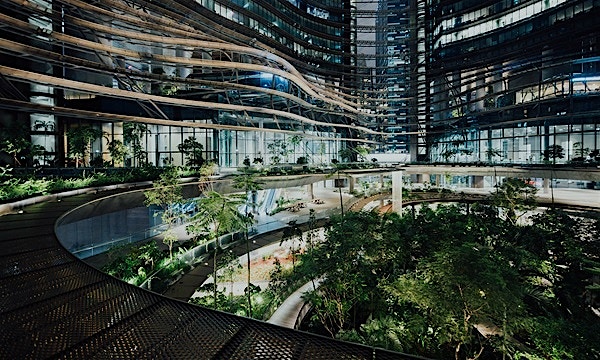To address low levels of rainfall, the Dubai government has been cloud seeding for quite some time now. Some people have suggested this is the reason for the hailstorm and unprecedented downpour on Tuesday that recorded 10 inches in rain in Al Ain — the largest in a 24-hour period since 1949.
Cloud seeding — a process of implanting chemicals in the clouds — works only when there is moisture in the atmosphere and clouds in the sky. This increases the amount of rainfall, expedites water to condense faster and fills in the deficit in a region that’s perennially dry, like UAE, where the summer air temperatures soar above 50° Celsius.
However, experts said the cause of the rainfall was a natural phenomenon exacerbated by climate change. They termed this “abnormal phenomenon” as a “pressure squeeze” on the air, which was created by a low-pressure system at the surface and in the upper atmosphere at the same time.
The squeeze was further intensified by two contrasting factors: colder temperatures higher than normal atmospheric heat and the warmer ground temperatures caused by incoming heat from the surrounding warm seas. This resulted in a powerful thunderstorm.
Brace for more
Extreme weather events are becoming frequent in the past few years. In the past three to four years, there had been some devastating incidents like the maximum temperature in the UK crossing 40° Celsius, tornados in India’s West Bengal, floods and drought in Australia’s Queensland, blizzards in the US and a rise in global sea level due to El Niño conditions in 2023.
What happened in Dubai is likely to become more frequent due to the severe effects of human-caused climatic changes.
Heavy rainfall will increase due to the extra moisture caused by the rising temperature in the atmosphere. With a simultaneous rise in potential evaporation rates and atmospheric capacity to hold that water, events like this will increasingly take place.
Experts across the world have been urging governments, organizations and people to embrace sustainable initiatives to prevent extreme climate change incidents.
While a reduction in greenhouse gas emission rates and adopting net-zero practices could help, embracing a circular economy is also crucial now. Investing in carbon neutral measures, switching from fossil fuels to renewable energy, speeding up afforestation, embracing a recycle-and-reuse model and the planting of mangroves are some of the ways to address environmental concerns.
Additionally, when it comes to making the right use of technology, there are AI-ML, green blockchain, cloud, digital twins, IoT and many more solutions helping fight climate change, solving real-world problems and adopting sustainable practices at scale.
These are providing real-time insights during and before extreme weather events, predicting water level during flood, capturing footage and fighting natural disasters like wildfires and earthquakes and many more.





